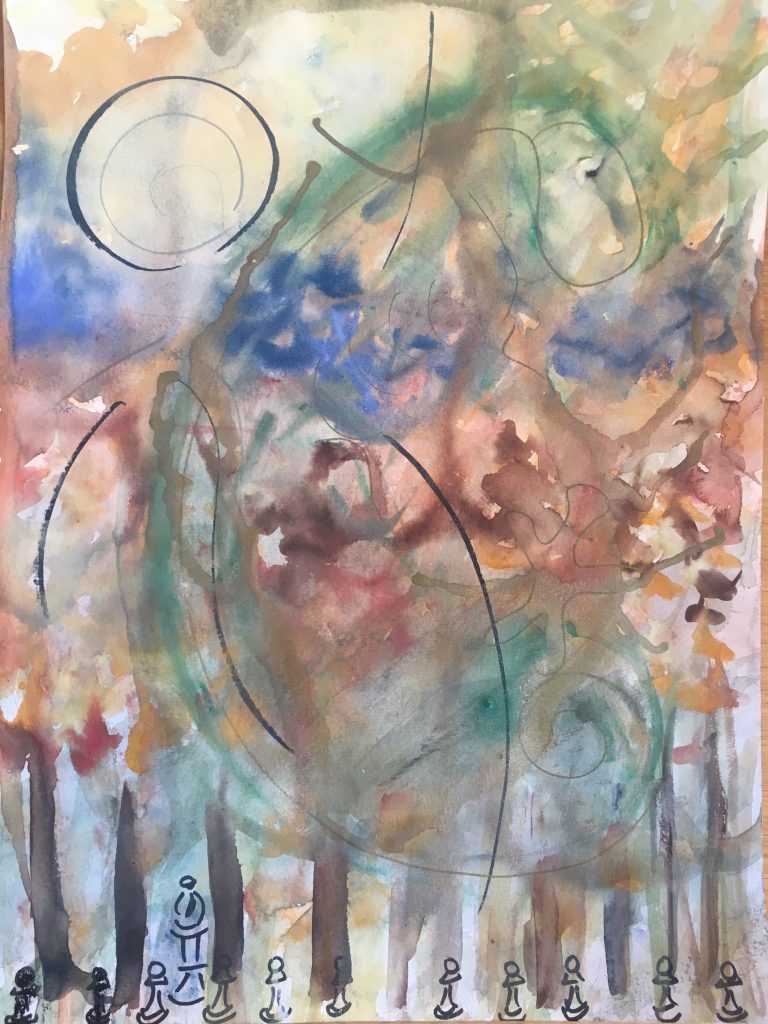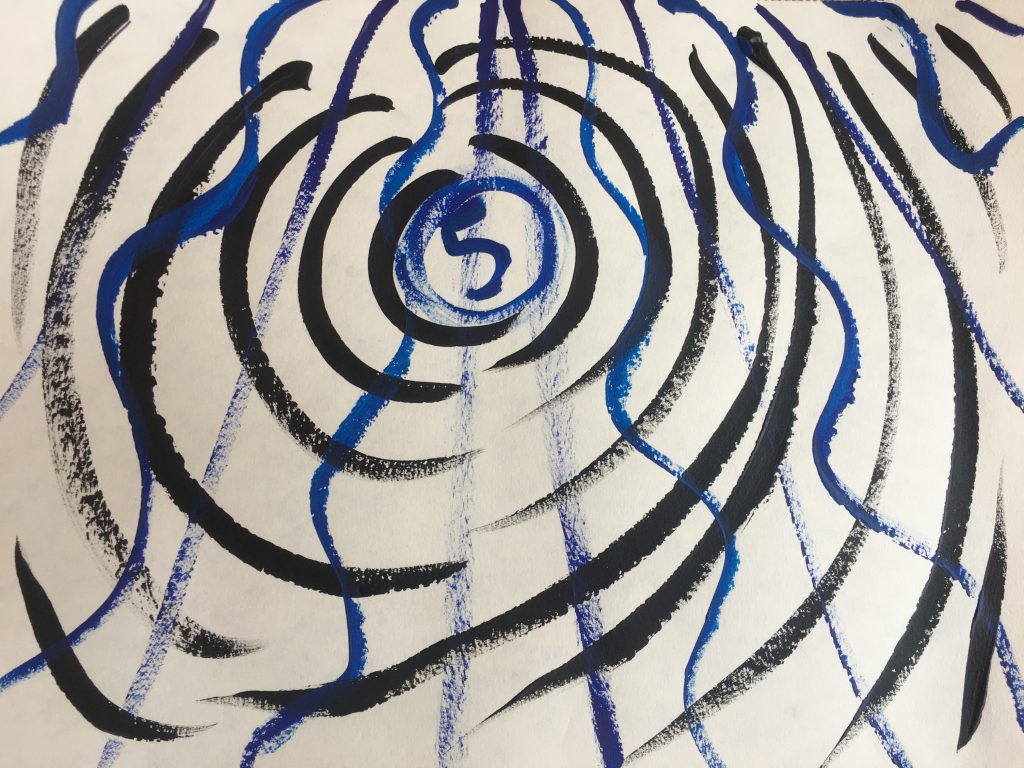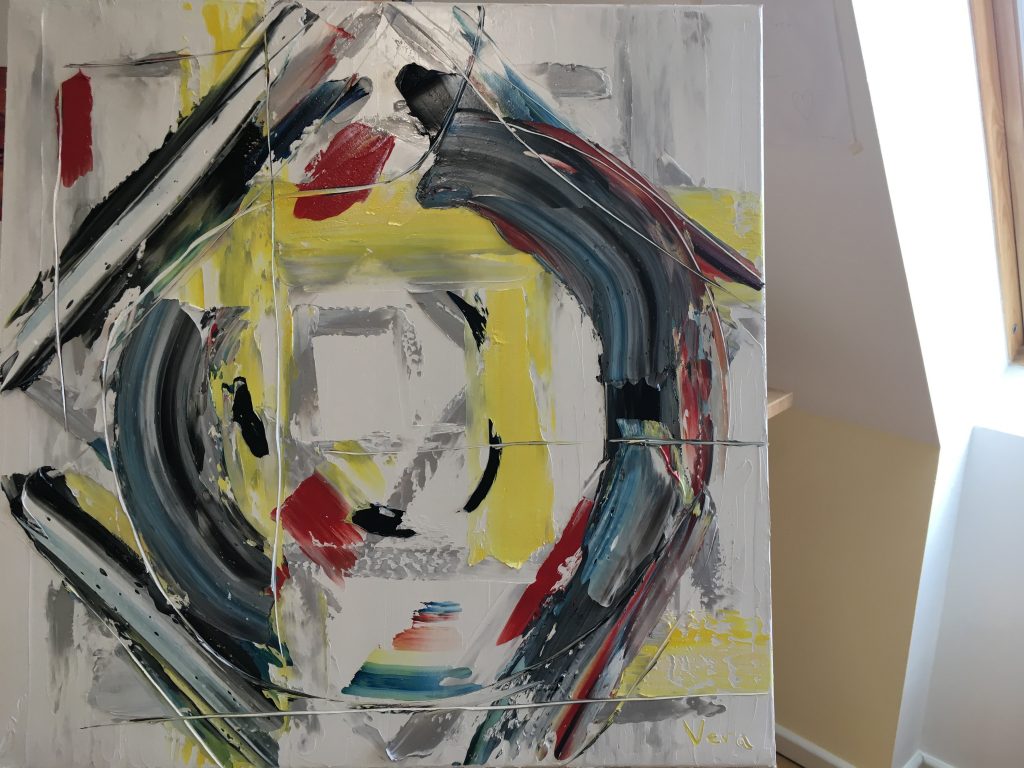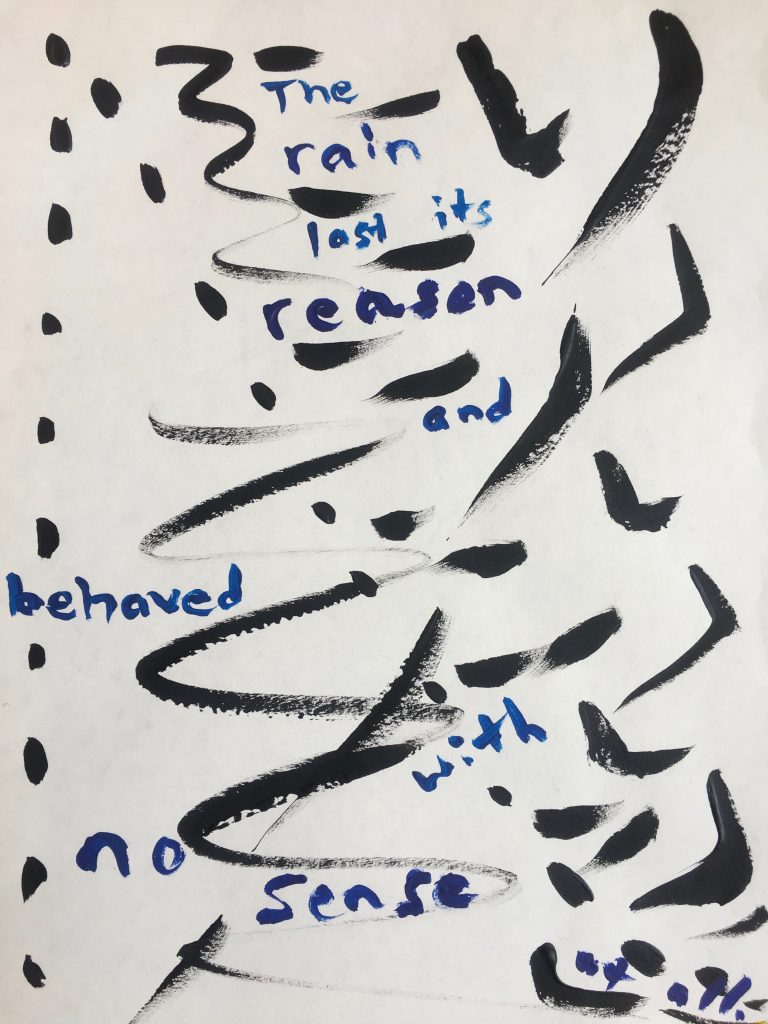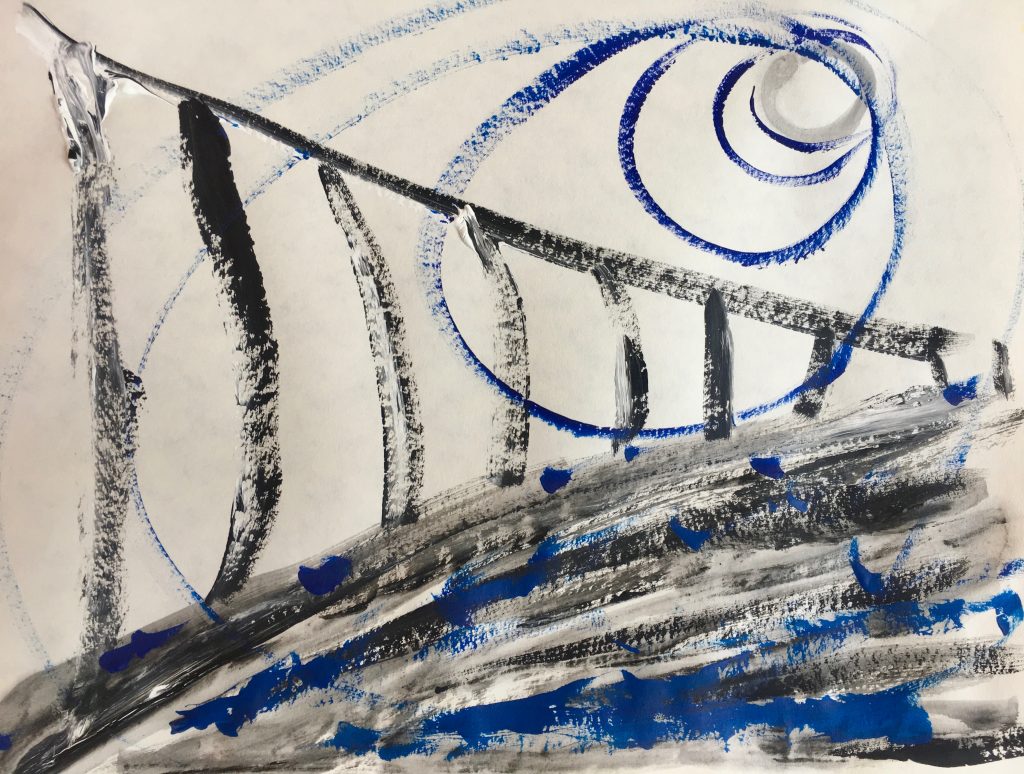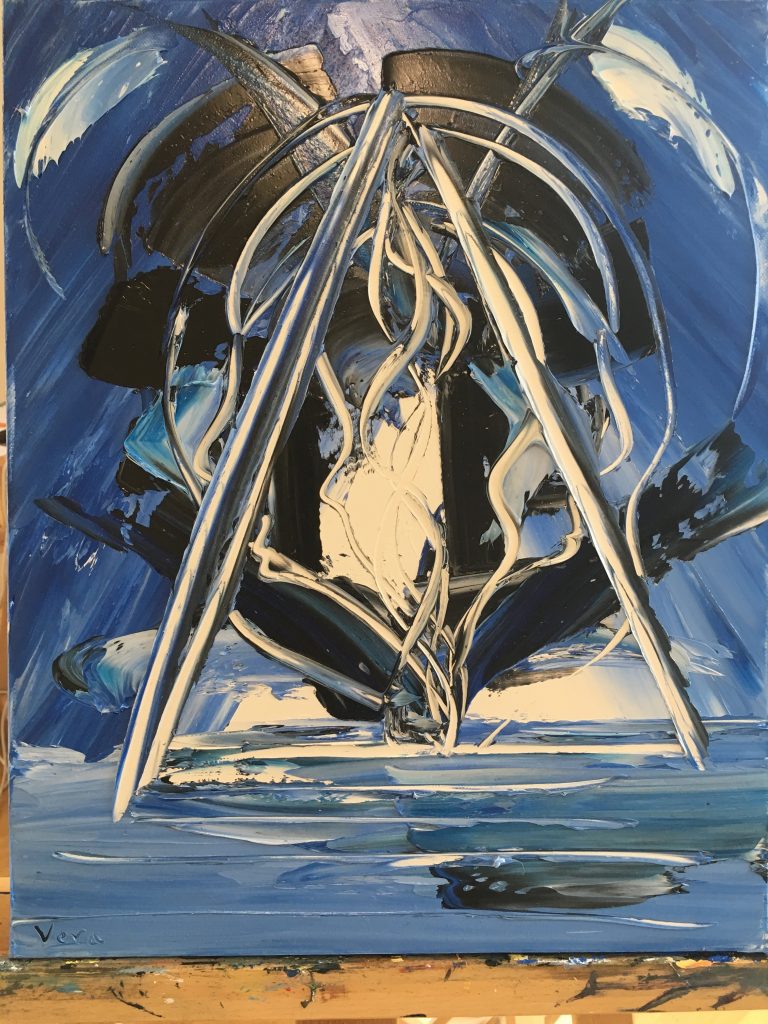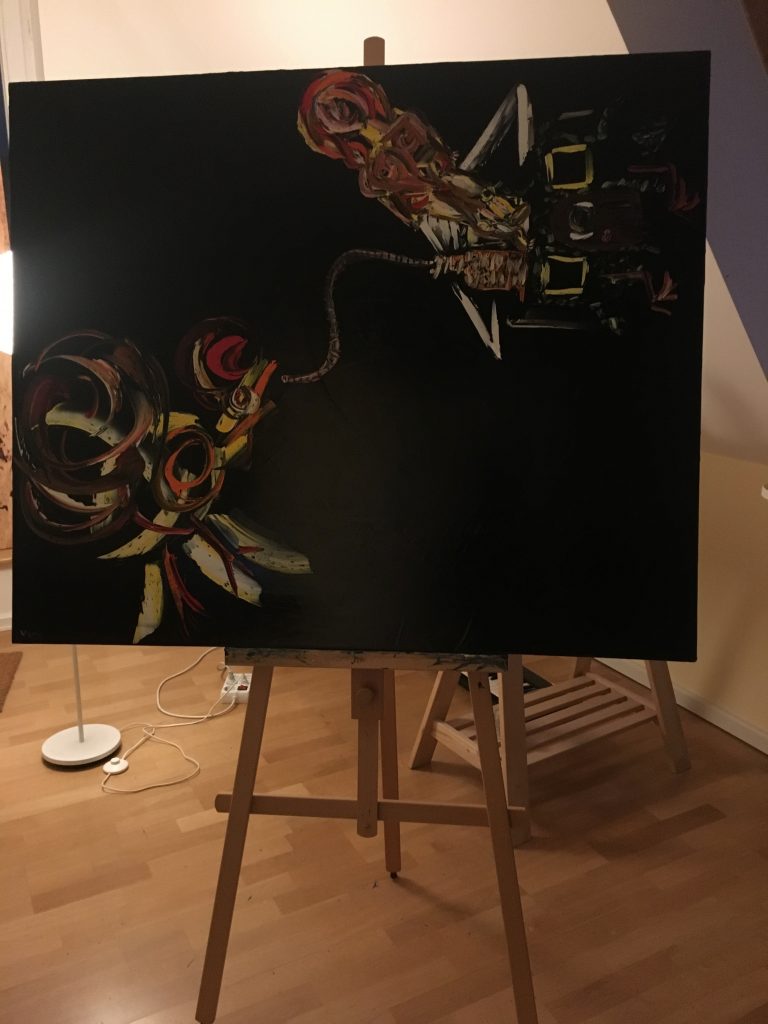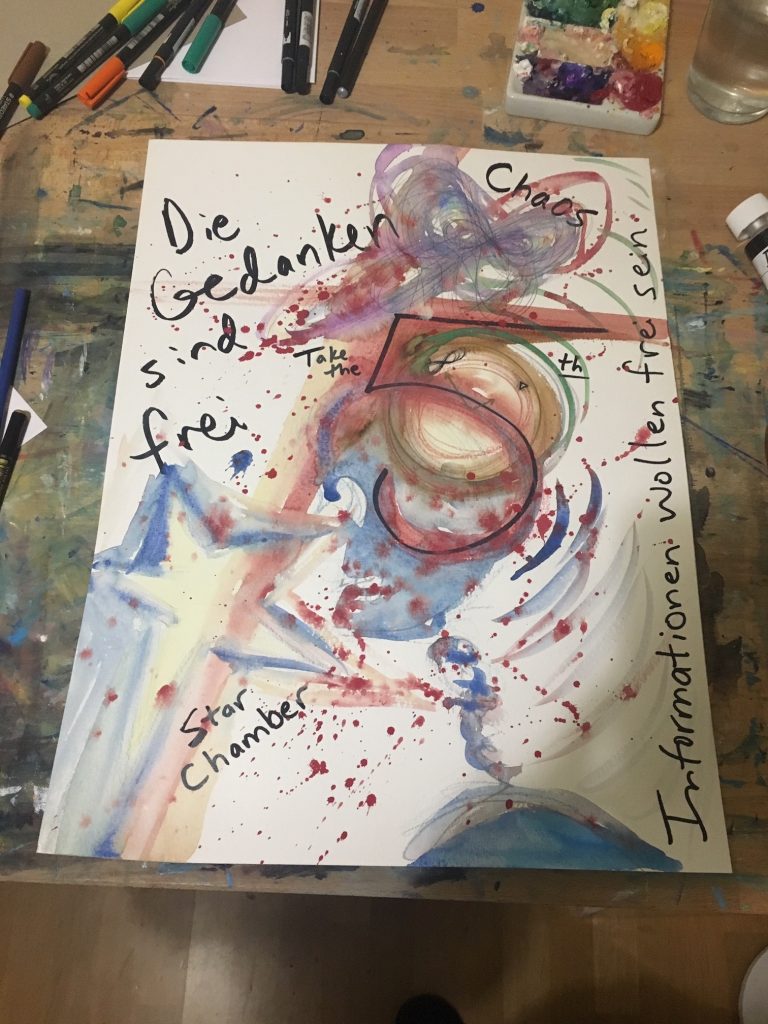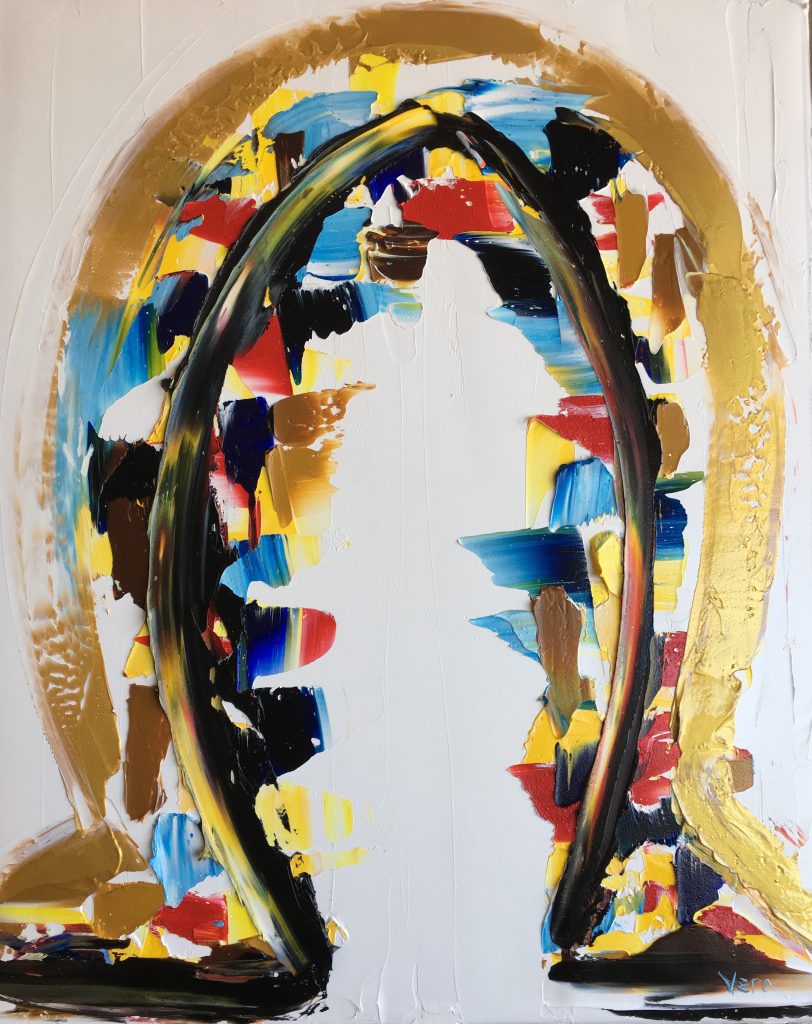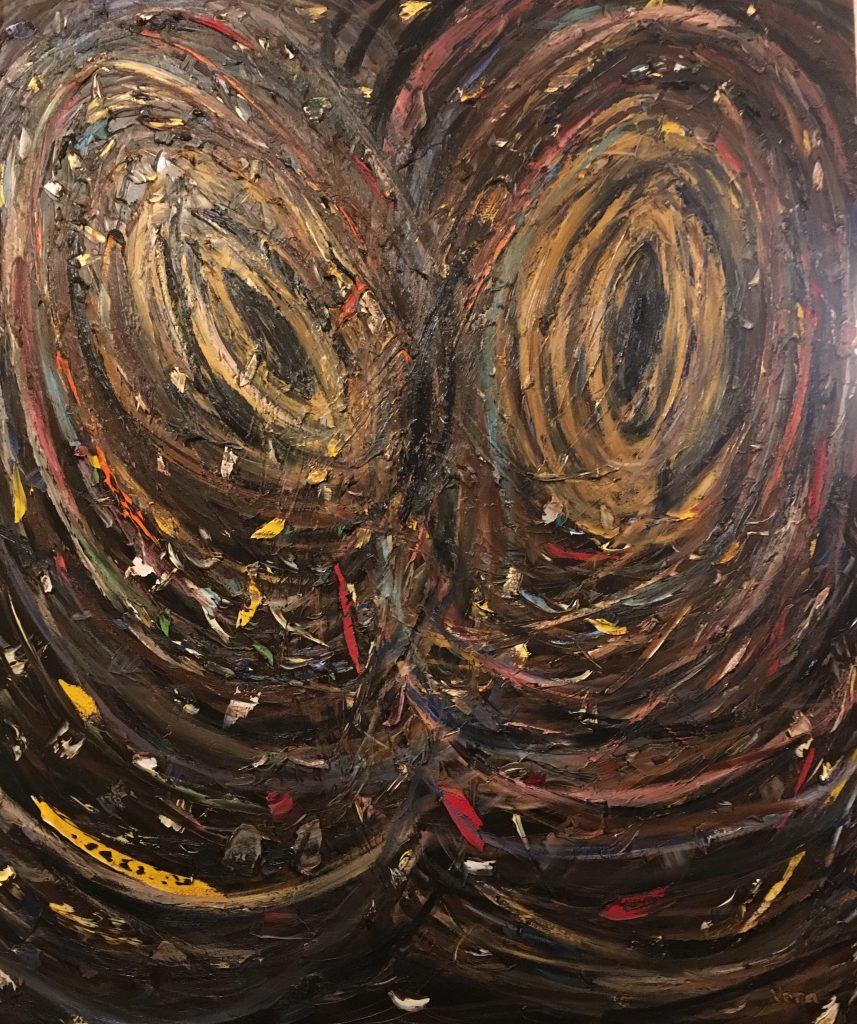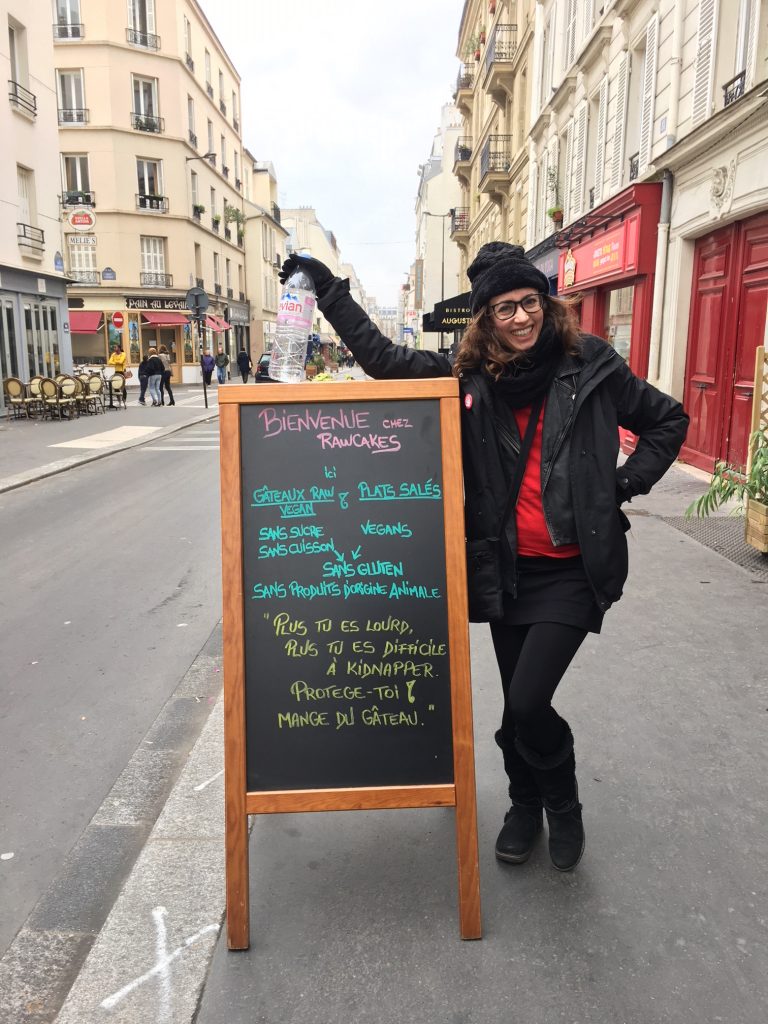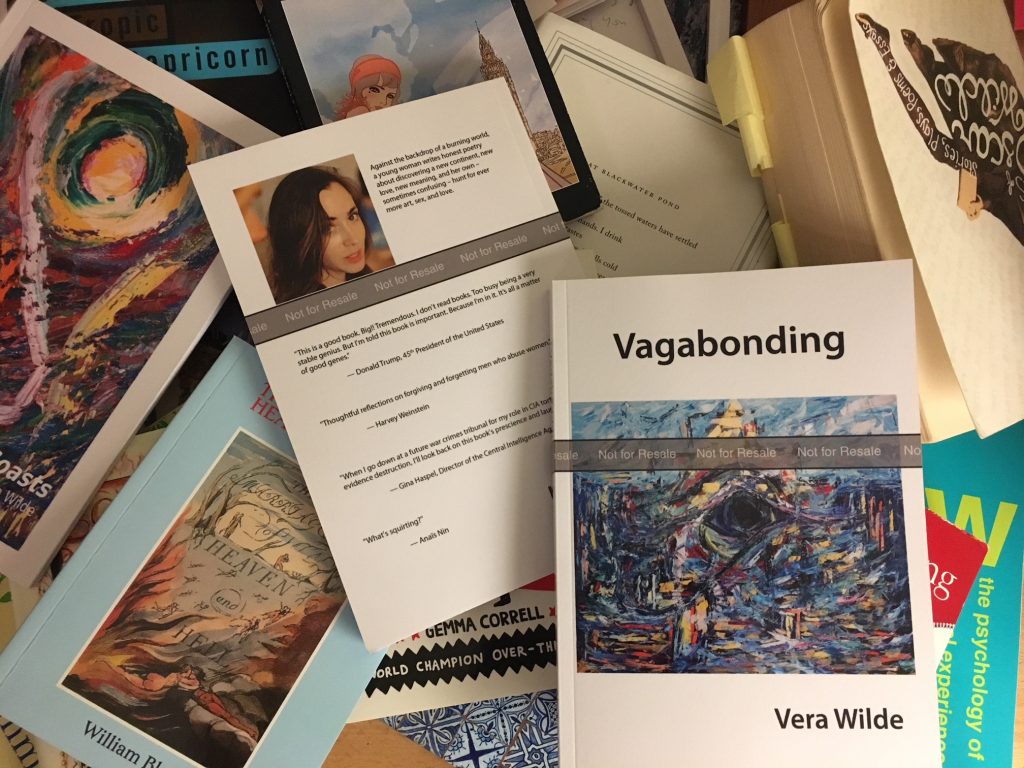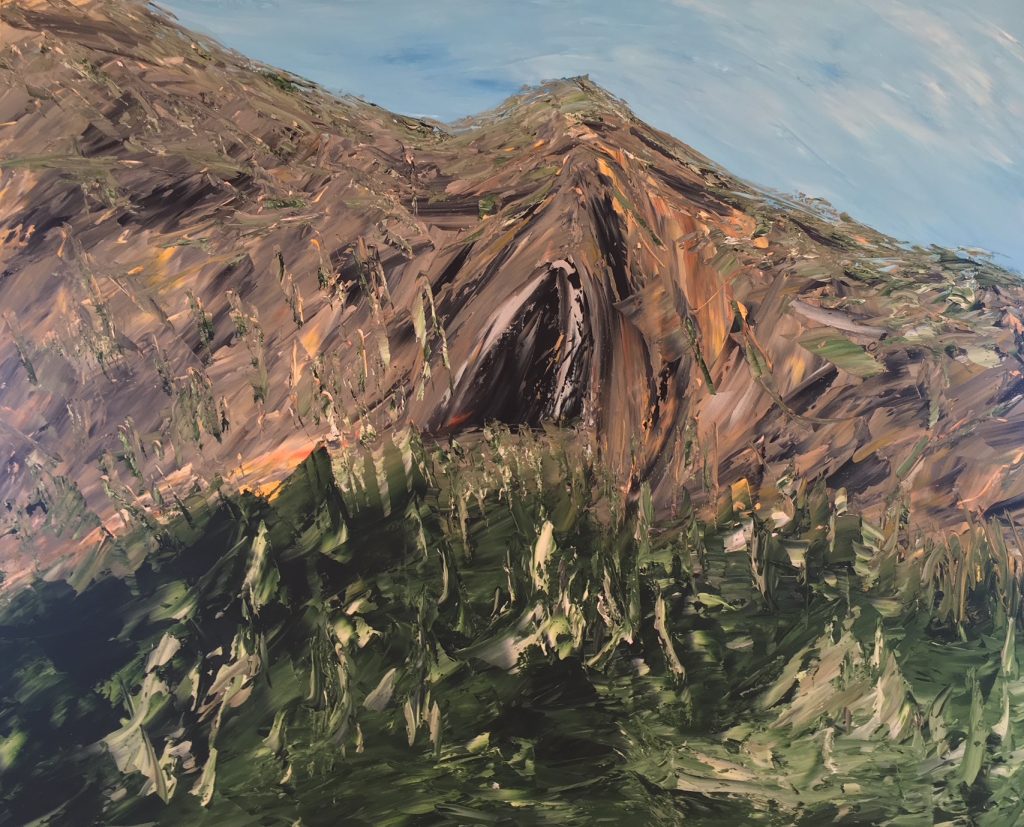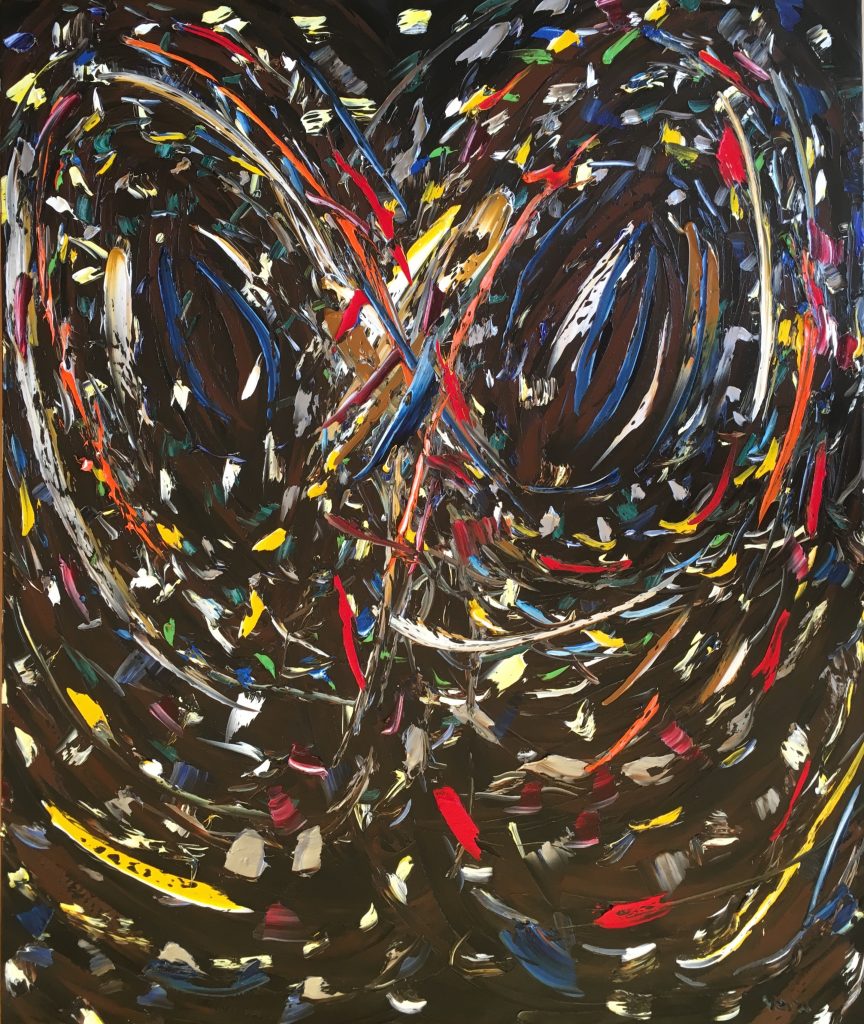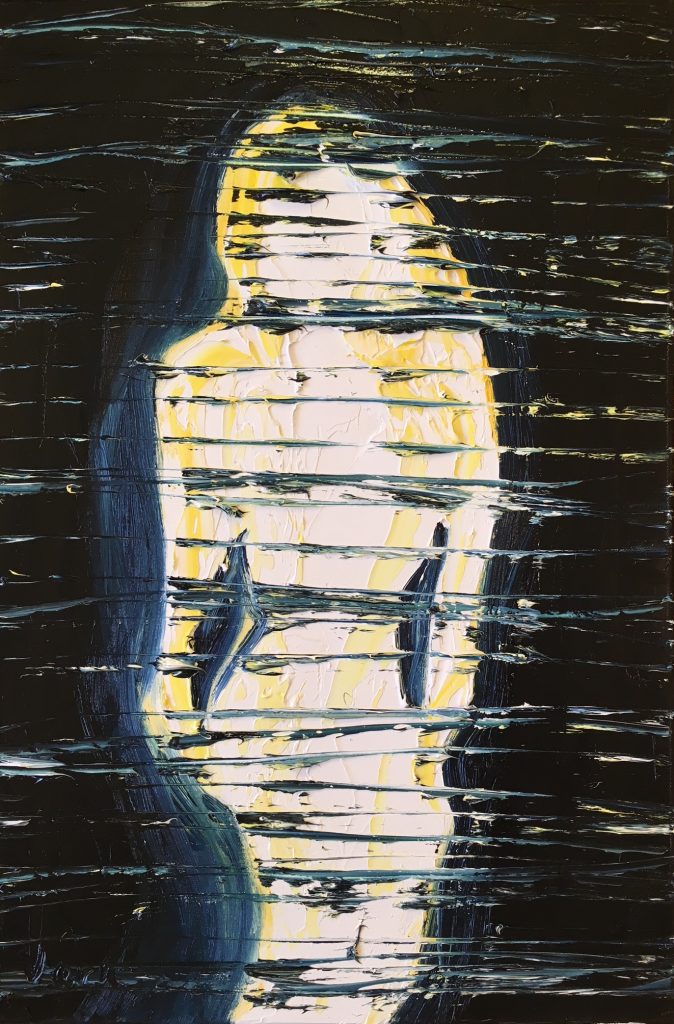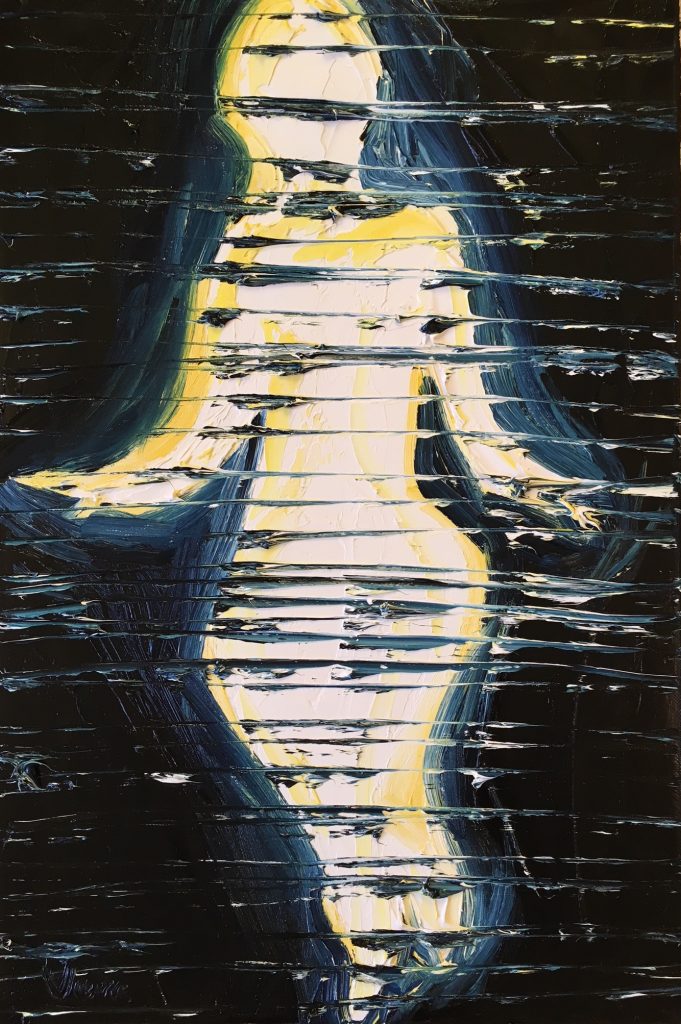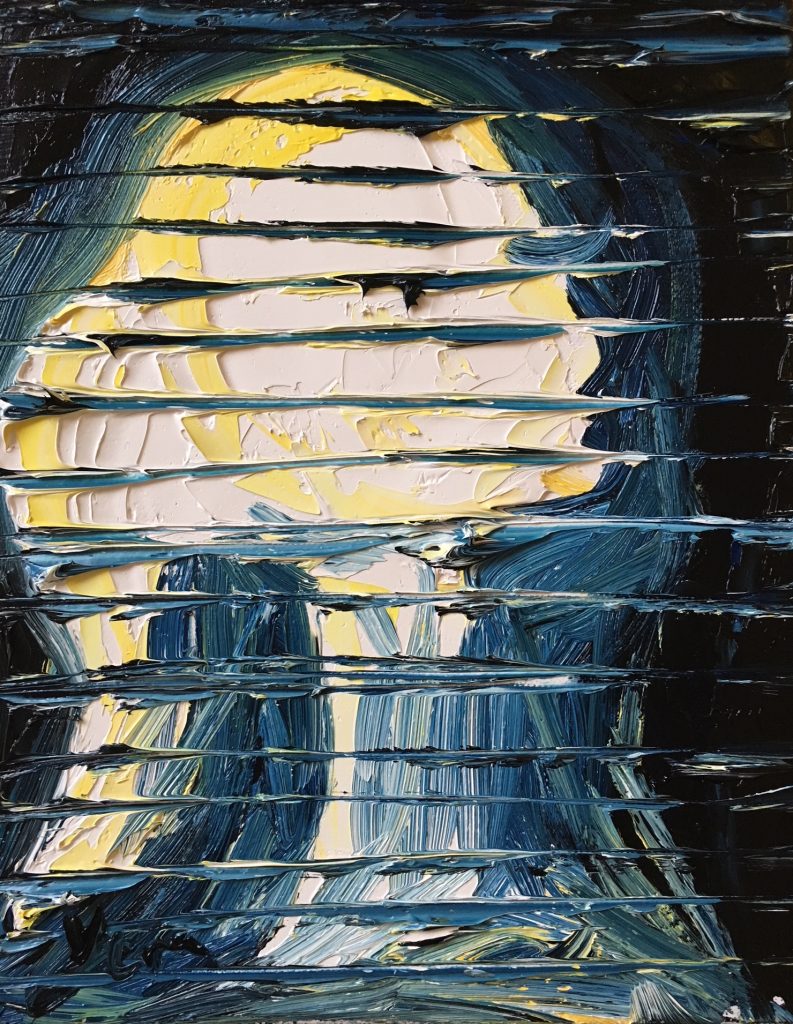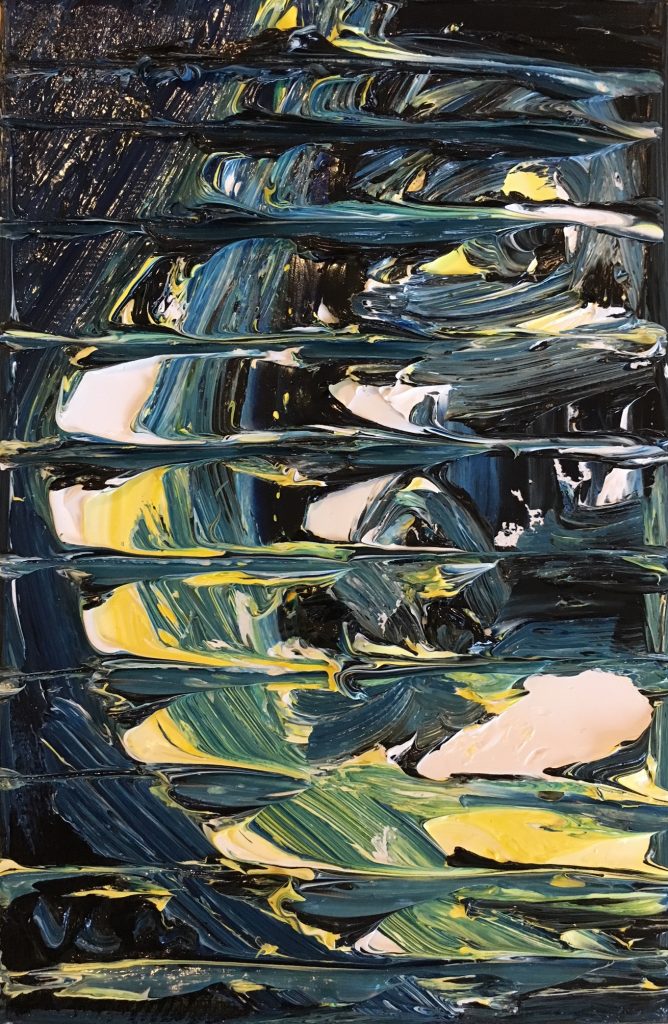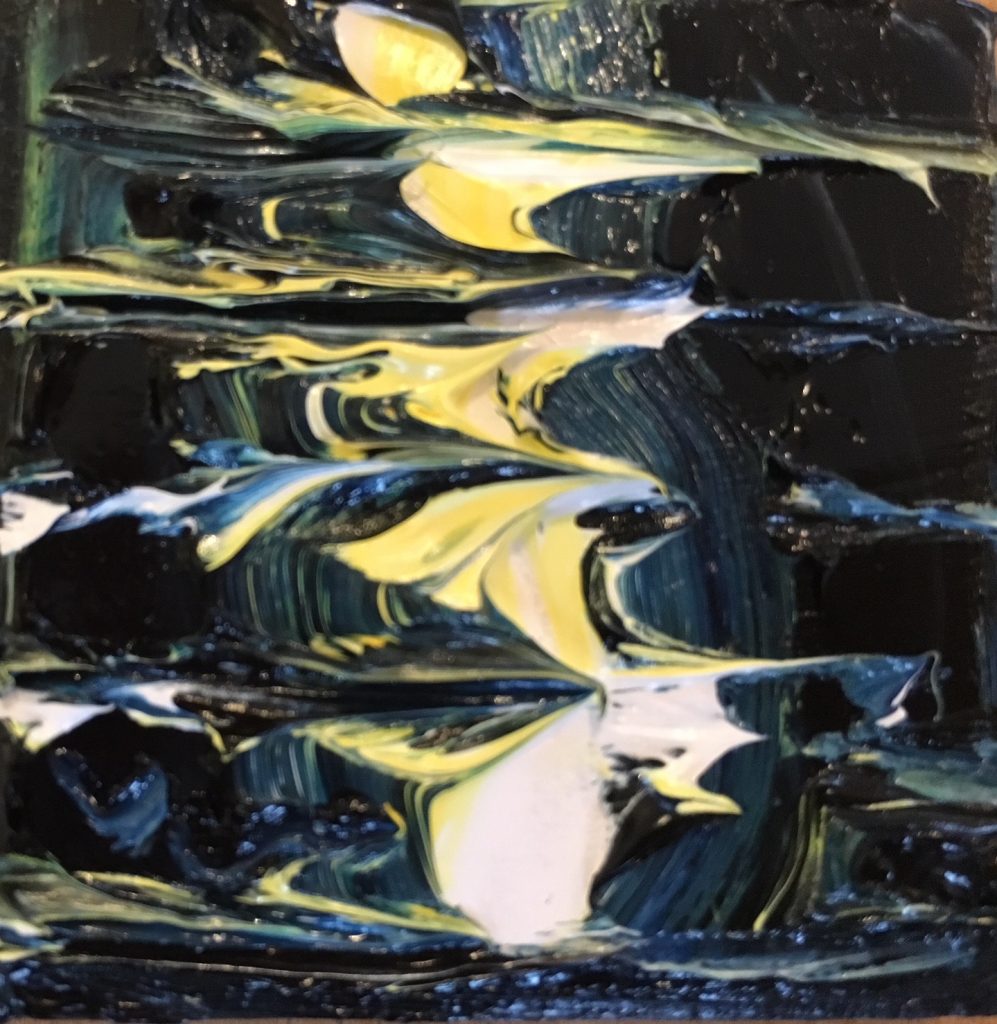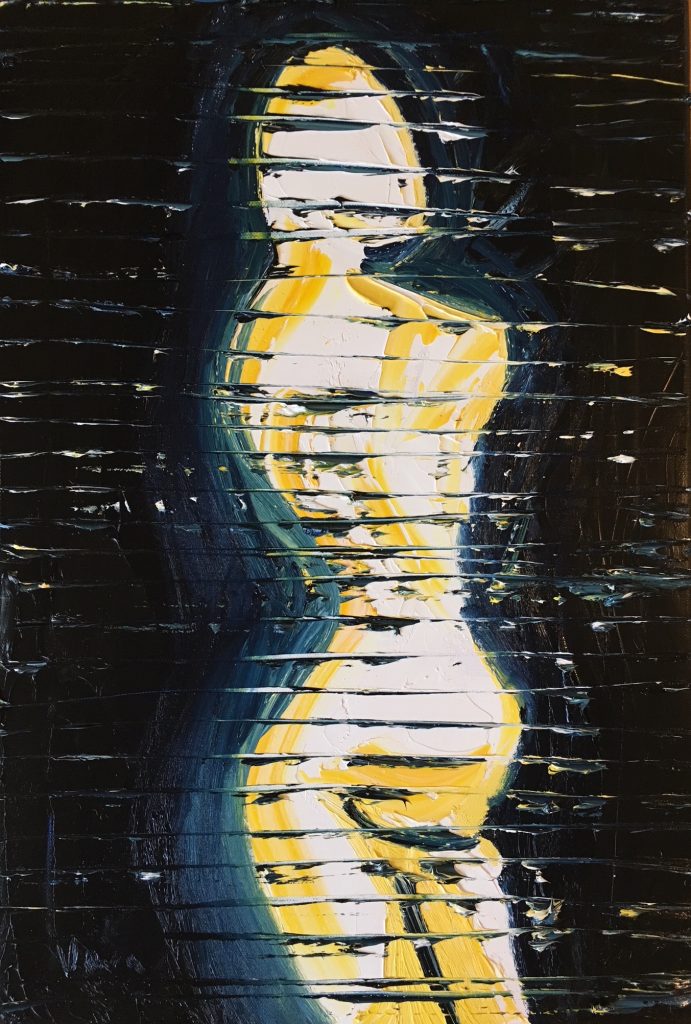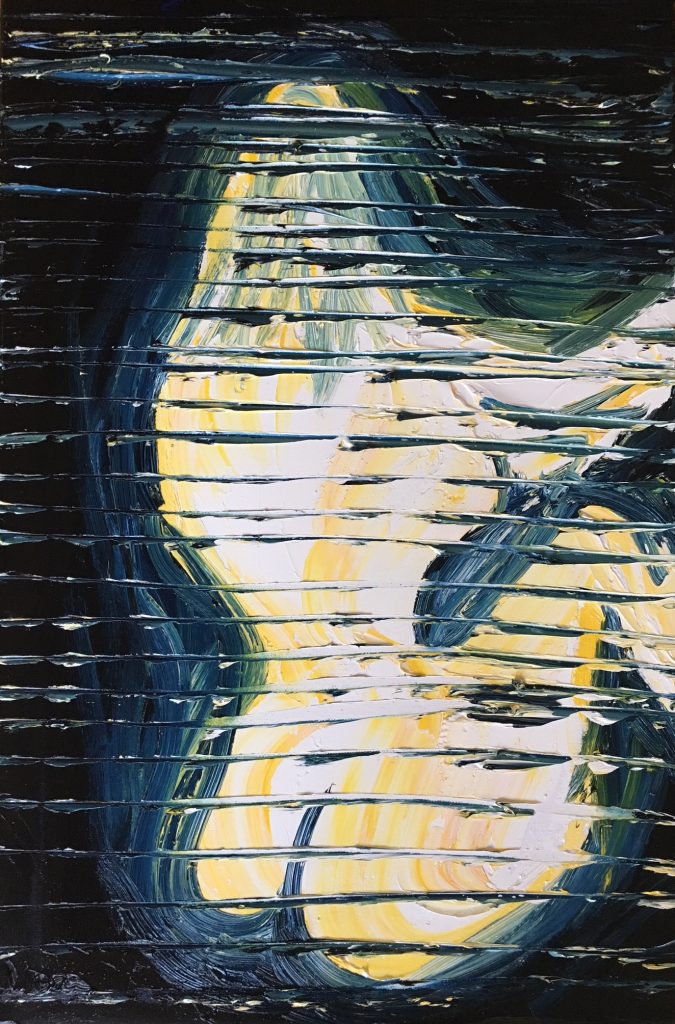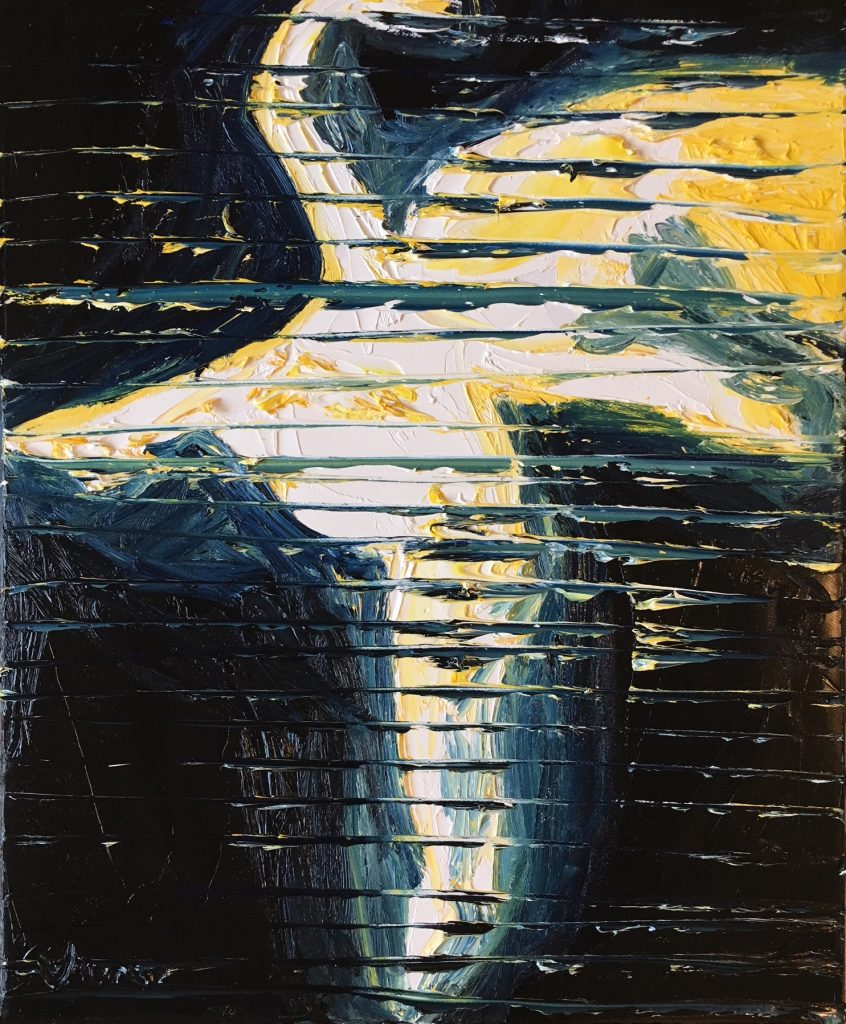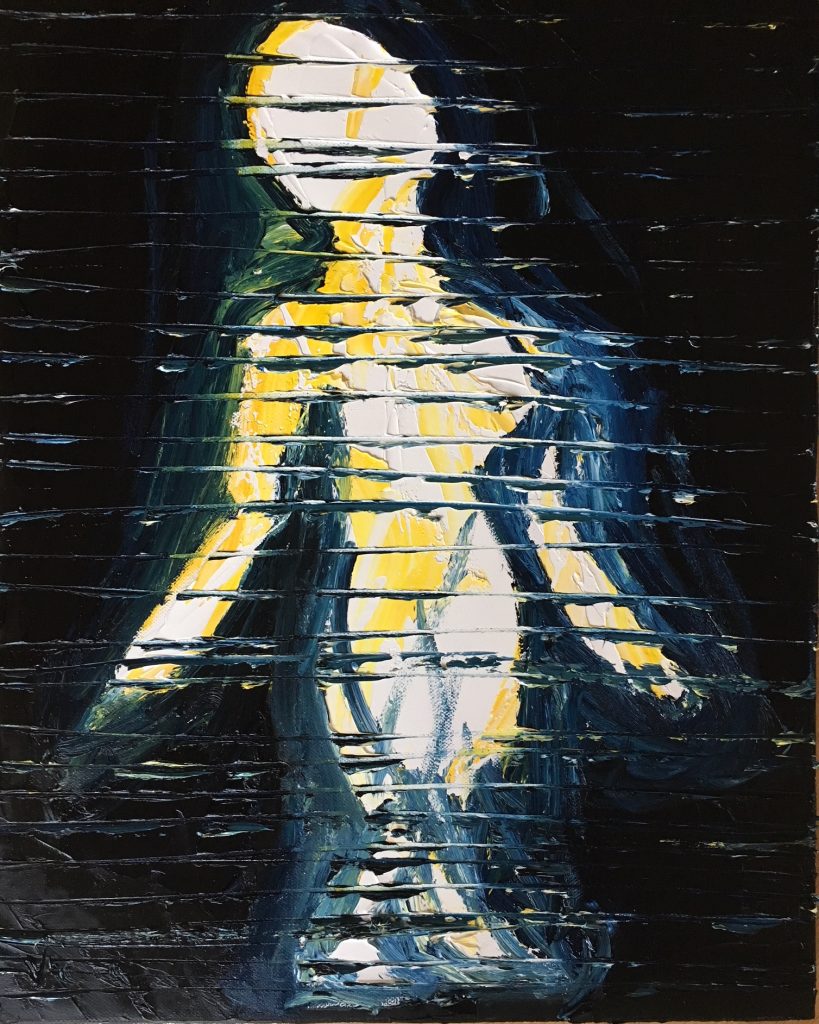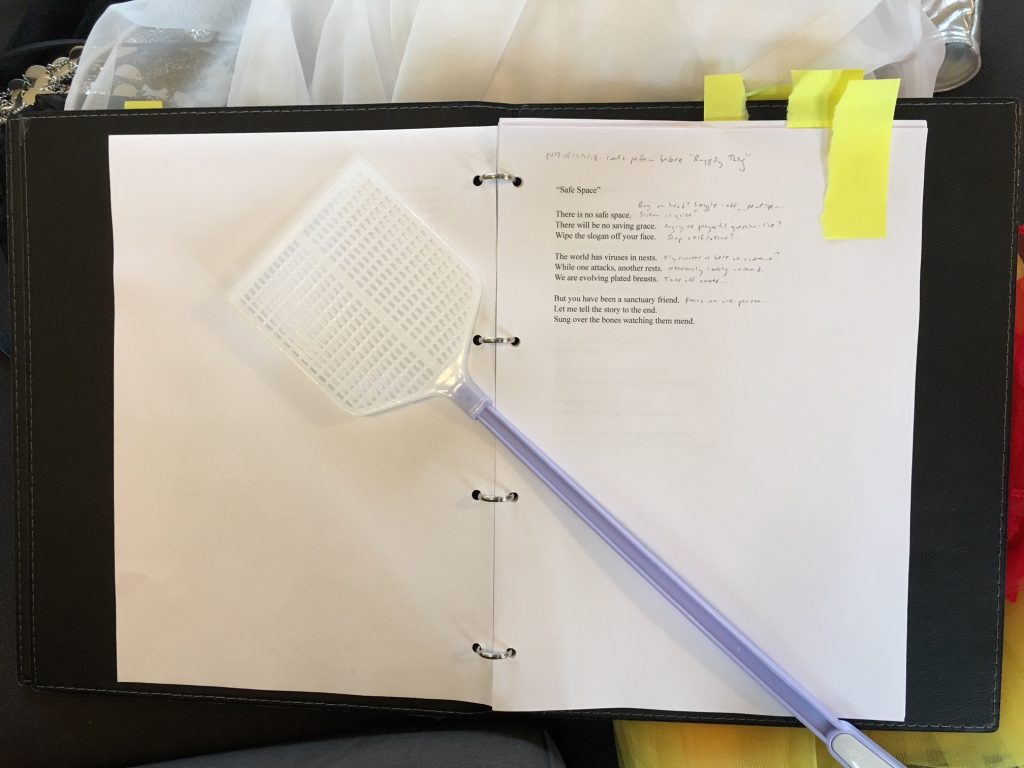“Yes, we can!”—sometimes be bothered to eat a few more salads when the future of humanity is at stake. But should we?
“The world needs your salads,” said fair Hanka during the awful summer heat, and the recent EAT Lancet report on healthy nutrition within planetary limits proved her right. So here again are a few of my favorite gluten-free, dairy-free recipes this season.
Almost-pudding breakfast cocoa
If you stop doing normal things, like the young climate activists who have stopped going to school on Fridays , perhaps the world stops spinning (at speed) towards its hypernormalised disasters. Even going to school to prepare for a future marred by climate change. Even staying up late before drinking coffee first thing in the morning. You cannot overthrow the government in the age of mass surveillance, but you can change your daily life. Thus the current wave of climate diets promoting mainly less or no animal product consumption (low-Moo and no-Moo, if you will)—under the auspices of advancing individual and planetary health.
Go to bed early before rising in the pre-dawn darkness to play the piano and make cocoa. In a roughly bathtub-sized mug (holding about 1 3/4 cups), mix a stirring spoon and a half of honey with five spoonfuls of unsweetened cocoa and a dash of cinnamon. Heat a shy, small cup of unsweetened almond milk plus a splash of rice milk (to sweeten) for about a minute and forty seconds in the microwave. Then dissolve honey-cocoa paste in warm (not hot) milk. The idea is to make it warm enough for comfort, but cool enough to not destroy the honey’s enzymatic magic. (Acacia, manuka, chestnut, and other honeys have anti-microbial and cytotoxic activities.)
In the now-empty smaller cup, heat half the creamy top of a can of coconut milk for about a minute. Add to cocoa bath. Stir smooth.
Enjoy warm and feel empowered to assist in making the world a better place. Although, like many vegetarian recipes, making this for breakfast regularly might increase your consumptive production of nefarious waste materials including plastic, because it’s hard to buy non-dairy milk in paper or glass containers. (So you’ll just have to eventually experiment with making your own, which turns out to also cut climate costs by holding out water and thus involving lighter shipping.) A regular cocoa habit also might increase your contribution to deforestation—which in turn contributes to climate change. So if a good measure of your daily caloric intake comes from cocoa, then you’re probably among those with flexitarian, vegetarian, and vegan diets who manage to have worse environmental impacts than some omnivores. (On the other hand, if much of your daily caloric intake comes from cocoa, maybe you need it for medical reasons.)
So climate diets show both ying and yang of simple, everyday disruptions as political actions. Yes, we can change the world: You can taste it. And as Paul O’Neill’s work has shown, sometimes successfully disrupting one small set of habits can actually lead to much larger-scale transformations. Once we see for ourselves the evidence that we ourselves can really affect change—well, we can change.
At the same time, trying to eat vegan often shows people how hard it is make dietary choices that are good for our bodies and the planet. Not everyone adjusts (digestively speaking) to diets reliant for protein and other nutrients on seeds, nuts, and beans. Not everyone has the time or inclination to puzzle out how to keep buying local over factor-farmed (which reduces climate impact as well as having other merits), when the obvious meat replacements like tofu tend to come wrapped in plastic from much farther away than the local commune. Actually looking at the environmental life cycle of the goods and services we consume and how they affect our health—and questioning why our consumer choices seem to exist in a defection-rich, information-poor decision environment oddly divorced from politics—is much harder than embracing simplistic, individualistic decision rules. The marketplace of grub, much like the marketplace of ideas, is neither transparent nor ideology-free.
And satisficing simply does not work here. Just eating less animal products is not good enough because you must also avoid single-use plastics. Just eating local is not good enough because you also need to worry about the impacts of what you consume on the soil, the surrounding ecosystem, and the atmosphere. There is a whole Calder-esque mobile of concerns to evaluate in a constant learning process. As a stationary resolution with simple decision rules, one might be forgiven for writing off the whole enterprise. Climate diets are a good and noble idea in theory, but they can easily fail in nutritional, planetary, and political practice where the reality of making (and digesting) dinner begins.
And yet: It is corporate interests that set them up to fail. Human (and other animal) health and planetary interests demand that we fail again, fail better in the learning process of being good stewards of ourselves, one another, and our home planet. For this to be fun, we have to see it as a process, like having better infosec, or adulting.
William Blake once wrote: “I must create a system, or be enslaved by another man’s.” We must create a system of assessing and limiting (including by causing corporations to limit) lifecycle environmental costs. One that does not, like calls to binary and increasingly tribalistic decision rules, reduce the complexity of this task beyond its utility. The movement to address global environmental crisis with consumer diet and lifestyle choices distracts from the larger structural issues in play. Keep the empowerment and toss the myopia like a bit of skin that has formed on top of an otherwise perfect cup of cocoa.
Ingredients
5 spoonfuls unsweetened cocoa
1.5 spoonfuls honey
dash cinnamon
shy cup unsweetened almond milk
splash rice milk
1/2 the cream plus a little liquid from a can of coconut milk (i.e., one can’s worth of coconut cream yields two cups of cocoa plus some leftover milk, useful in things like vegan café au lait and amaranth-coconut porridge)
Amaranth-coconut porridge (aka cream of wheat for weaklings)
Amaranth is a tasty grain that won’t kill you if you’re medically allergic to gluten. Coconut is a tasty milk that won’t kill you if you’re medically allergic to milk. Put them together, and you get cream of wheat that won’t kill you if you’re allergic to cream and wheat, in which case you’re a weakling who will probably be among the first to die in the coming end times we’re not to call that because apocalypse is somehow the domain of right-wing nutjobs even as climate scientists, biologists, and other witnesses of the current harbingers of global ecosystem collapse are screaming. Comfort foods are important.
Combine 1 cup amaranth with 2 1/2 cups coconut milk in a medium-sized pot with a lid. If you’re using a normal can of coconut milk, skim and save the cream off the top make creamy, almost-pudding breakfast cocoa, mashed potatoes, or veggie mash later.
You could use a commercial non-dairy milk (“mylk”) preparation instead, but… These will tend to be sold in plastic-containing containers as opposed to cans (avoid plastic). They will tend to be less rich than coconut due to lower fat content. Relatedly, they’re also typically more processed, and higher in added sugar in one form or another—all factors that can lead foods to contribute to overweight/obesity since they correlate with less food value and less satiety alike. So unless you have real food allergy / intolerance issues, real milk in moderation is probably better for you than mylk, and less-processed non-dairy alternatives are similarly probably better for you than more-processed ones.
In this and other contexts, veganism is more complicated as a personal and planetary health strategy than it might seem at first glance. Given baseline food security, it would probably be better for both individuals and the planet for people to simply fast more / eat less, than to embrace a particular diet such as veganism that seems quite vulnerable to corporate cooptation and that, done wrong, can easily harm people and the climate alike. There’s a broad array of suggestive evidence for the individual health benefits of fasting and calorie restriction, to say nothing of the power of hunger strikes, boycotts, and other forms of directed non-consumption to help people affect political change—most famously in the cases of Gandhi and Rosa Parks and the Montgomery Bus Boycott.
So the satisficer’s climate diet looks more like fasting or calorie restriction than veganism, and the radical’s climate diet looks more like organizing collective boycotts of the worst environment offenders at whatever level works best politically than individual non-consumption. You could argue this boycott of the worst is sort-of already what climate diets do, since livestock make huge amounts of greenhouse gasses. But, because it is hard to calculate full environmental life-cycle costs of meat and dairy alternatives, eating less period makes more sense than eating different things. Harnessing that to a non-violent resistance strategy such as the hunger strike would maximize the strategy’s efficacy by framing it in explicitly collective, political—as opposed to individual, personal terms.
But that then requires slightly more organization and communication than simply making breakfast. Bring amaranth-coconut mixture to a boil on high heat. Add a dash of cinnamon and salt. Cover, turn down to medium-low heat, and simmer until grain absorbs liquid and the consistency is softer, like cream of wheat (about 20 minutes). Remove from heat and let sit to thicken and cool (10 mins).
As with any bowl of grains, there are many ways to dress this up. Some people like cream of wheat and its allergen-free subsidiaries (“cr34m %f wh34t?”) with a bit of butter and sugar—by which is meant here deforesting palm oil-free, non-dairy butter that you have magically procured without consuming plastics, and a lower glycemic-index sweetener like maple syrup or coconut sugar. Another alternative is breaking up pecans and walnuts with diced dried fruit (figs, apricots, cherries) and cocoa nibs on top. Hot berry compote or fresh berries can be used in place of dried fruit, too.
To make hot berry compote, throw your favorite berries in a pot. Frozen berries are a good year-round staple, as (especially in winter) fresh ones can come from too far away to be environmentally responsible. Shipping contributes to ever-rising greenhouse gas emissions. So at least until environmental impact information is listed on foods for consumers to evaluate and compare, just like nutrition facts labeling, one will be forever juggling and imperfectly weighing guesses of emissions contributions including greenhouse gas production (cattle burp—a lot), greenhouse gas use in transit (shipping from afar versus buying local adds up), and other factors.
Frozen produce can often be had from closer to home even out of season. It’s also (usually) cheaper than fresh, and is supposedly among the highest-nutrient you can buy (since produce that’s fresh-frozen can maintain more nutritional value than produce that’s been transported long distances without refrigeration).
Boil fruit on high heat briefly, until it bubbles. Then turn down the heat and stir frequently until the mixture becomes thick and smooth (10-15 minutes). Pour compote over porridge and enjoy.
Serves two, or keeps a day on the counter / four days in the fridge. Vegan fare tends to be easy like that—less temperature-sensitive and prone to spoiling. So at least weaklings like me will know how to cook breakfast without refrigeration when collapse comes. Does anyone know how to make a fire?
Ingredients
1 cup amaranth
2 1/2 cups coconut milk (buy a few cans and save the cream off the top for later)
water
dash cinnamon, salt
(optional)
vegan butter, maple syrup, crumbled nuts, dried / frozen / fresh fruit, cocoa nibs
Quinoa is the new PB&J
[Note: It has been brought to my attention that PB&J is an American delicacy with which few Europeans are familiar. It stands for “peanut butter and jelly,” a popular sandwich type in which processed “peanut butter” composed mostly of trans fat, salt, and sugar is wiped down one side of a slice of “bread” (so-called although its substance is entirely different from that of bread in the rest of the world) while “jelly” or “jam,” a form of colored sugar sold in jars decorated with matching fruit pictures, is wiped down one side of another slice. Then the wet sides are stuck together and the creation is eaten for lunch—just like a regular sandwich made of actual food, but while corporations make more money.]
Rinse quinoa in a sieve. Then mix 1 part grain to 1.5 parts water (e.g., 1 cup quinoa to 1.5 cups water) in a medium-sized pot. Bring the mixture to a boil with a bit of salt. Turn down to medium-low heat, cover, and let simmer until the water is absorbed (20 minutes). Remove from heat.
Spoon a portion into a bowl. Top with your favorite nut butter (the less processed and fewer ingredients, the better). Add salt or white miso paste to taste.
Yes, white miso paste. Look: If you can’t have (glutenous) Vegemite, white miso paste plus margarine on toast is a close second. If you can’t have salted caramel chocolate (dairy), white miso paste plus molten dark chocolate on French toast is what you can have. And it is frickin’ delicious. Did you think this was all about saving the world? Fine. Only joy makes people kind and strong enough to save the world. White miso paste and dark chocolate are joyful. Ergo, white miso paste with melted chocolate is essential to saving the world.
Break up some of your favorite chocolate on top of the hot quinoa and nut butter mixture. Mixing unsweetened and 75% dark forms a nice, bittersweet complement to the sweetness of the hot berry compote (see previous recipe). Serve hot.
Leftover quinoa reheats well, keeps at least a week in a sealed container in the fridge, and is a nice addition to stews, casseroles, and salads—basically anything into which you might otherwise have thrown higher glycemic-index, glutenous pasta. Quinoa is cool like that. Adult lactose tolerance is normal only among some ethnic subgroups of whites, and gluten intolerance has various racial patterns as well (e.g., confirmed celiac disease is more common in Jews, and African-Americans are more likely to adopt gluten-free diets than their white counterparts even though doctors tend to be averse to calling that a known pattern of gluten sensitivity). But quinoa seems well-tolerated across populations in addition to being hardy and nutritious.
Thus quinoa seems increasingly important to the future of food security. If relatively market-dominant global grain crops suffer harvest failures due to climate change, quinoa will probably help feed the hungry world. Quinoa PB&J could really become “the new PB&J.” But with only Plumpy’Nut on top.
For now, forget Plumpy’Nut. Forget famines. Forget what you don’t or can’t have and focus on what you can. Melt more chocolate chunks on top, making a warm breakfast bowl that tastes like a combination of peanut-butter M&Ms and health-food store trail-mix. Filling, but not hopeful. Sweet, but somehow also unreal. Have another bowl while you still can.
Ingredients
quinoa
water
peanut butter
frozen berries for compote
(optional)
salt
white miso paste
part of a chocolate bar, chunked
Steckrüben stew
Steckrüben—Swedish turnip, rutabaga, pig feed, dinner. Dinner all winter long in Germany, 1916-1917, when bad weather killed grain and potato crops while wartime pressures including an Allied Blockade reduced trade and transportation, producing the Steckrübenwinter (aka the Kohlrübenwinter or Hungerwinter)—also known as the (slightly mistranslated) Turnip Winter or Hunger Winter. Hundreds of thousands starved. Those who subsisted did so on rutabagas and black-market grain mixed with straw and sawdust. Such a weak diet made for weaker people when the global flu pandemic hit in 1918, possibly helping the Allies “win” as relatively more food-insecure Germans fell ill and disproportionately died.
Although living memory of the Turnip Winter has faded, root veg remain staples of northern European winter cuisine. Today health foodies promote turnips and rutabagas as low-cal, low-carb alternatives to grains and potatoes for exactly the same reasons they contributed to mass deaths last century: they’re mostly water (and some vitamin C).
But as always with food, rutabagas are more than the sum of their nutritional parts: Steckrüben today speak of being warm inside when it’s cold out. A symbol of deprivation has become one of comfort. Especially when cooked and blended for stew.
Rinse, cut off the ends, and dice rutabagas into a roasting pan. Add the white and light green parts of a leek, some finely diced fresh rosemary, dried thyme, salt, pepper, oil, and other spices as desired. Roast on 200 C until a fork goes in easily (30 minutes).
Meanwhile, sauté peeled and minced garlic (4 cloves) and onion (1-2 medium-sized, any color), then carrot (2-3 carrots), then celery (2-3 stalks). Cook on medium heat, stirring until carmelization (browning) starts (15 minutes). Stir in a bit of beef bouillon and parsley. Set aside the mixture in an extra-large soup pot.
To that pot, add any leftovers that work well in stews (like mashed potatoes and chicken stock). Add the roasted rutabaga and leek, along with more parsley, bay leaves, other spices, and water up to about 3/4 of the pot’s depth, so it can boil without spilling. For spices, start with beef bouillon (or salt), pepper, paprika, cayenne, onion granules, garlic powder, thyme, oregano (this list so far comprising a standard cajun spice mix), cumin, curry, sage, and nutmeg. Go easy on the bouillon / salt—add a bit and taste to find what you like. Bring to a full boil, then reduce heat and let simmer until everything is soft (about 25 minutes).
Remove soup from heat and let cool a bit before blending in the blender until just smooth. Taste, adding more salt, pepper, and other spices as needed. The consistency should be thick enough to hold up a spoon—more like purée than soup.
Irony: A bland dish based on a vegetable Germans only began eating (instead of feeding it to pigs) due to wartime starvation has become a flavorful winter comfort food.
Decadence: Using this stew as a canvas for other flavors, like glazed pork chops, roasted veg, and greens, makes it even more flavorful and comforting.
More irony: One reason to preserve the memory of what to eat, how, during times of famine, is in case of future famine. Yet the inclination is to dress it up to suit the times. So the decadence helps transmit the specs of survival. Or so I like to think.
More decadence: For pork chop glaze, mix a few splashes of tamari (gluten-free soy sauce), about 1/4 fresh lemon or orange juice, a small spoonful of brown sugar, a clove of minced and smashed garlic, a tablespoon of finely diced onion, some heavy dashes of paprika, some smaller dashes of cayenne, a small dash of nutmeg, and a sprinkling of cumin, thyme, oregano, sage, pepper, and parsley on and over pork chops in a small pan. Bake on 180 C for 30 minutes.
Meanwhile, repurpose the earlier root veg roasting pan to roast diced fennel, tomatoes, and bell pepper, tossed with oil and spices. Fennel and bell pepper don’t need much more than salt and pepper—though garlic powder, onion granules, and paprika don’t hurt. Fennel and carrots are also nice with a pinch of sweet spices like fennel seed and dill; bell pepper with savory like thyme and parsley. Tomatoes and eggplant are best with their classic Italian spice pairings—basil, oregano, thyme, parsley, garlic, onion, and maybe a pinch of rosemary and sage. Lining veg up in rows with their own spicing in one pan makes for nice blending and variety of flavors. Bake on 180 C for 45 minutes, 200 C for 30 minutes, or until a fork goes in easily.
If these veg don’t call to you or you can’t find them, use something else. The humble onion—peeled, halved, and doused with oil and curry powder—roasts up into an amazing sweet but savory, mellow but pungent treat. As do apples and pears with cinnamon sugar. Or celeriac with “Scarborough Fair”: parsley, sage, rosemary, and thyme.
When the stew is fully ready to serve—blended and back in the pot, or even on the table—then wilt some dark leafy greens to serve on top. You can’t go wrong with good greens, hot oil, salt and pepper. Lots of paprika, little cayenne, and garlic powder go well with spinach (which wilts in about 5 minutes, including flipping halfway through). Confit garlic and chili flakes go well with kale (10 minutes). Leftover dark leek greens from the earlier set of roasted veg take a bit longer (20 minutes). All greens go well with the standard Southern flavoring of oil, salt, pepper, and pulled-off bits of leftover pork from the bones, especially with a bit of extra heat: chili flakes, cayenne pepper and paprika, sambal, or whatever is at hand…
After dinner, leftover porkchop bones can be thrown in the stew to flavor the rest of the pot, simmering on low heat for an hour or so before being placed outside to cool down for a few hours or overnight, so it doesn’t heat up the rest of the fridge contents. Yes, it’s true. If you eat meat at my house, it’s highly likely that I will (not even subtly) steal any gnawed bones off your plate to boil into soup later.
Restaurants do this, too; they just don’t tell you about it. Just as the ruling elite steal the gnawed bones of the former middle class’s remaining wealth to boil in the late capitalist soup of global collective action problems like the sixth mass extinction which has not yet hit the food chain long and hard enough that it has us living on rutabaga and straw. Meanwhile they get the public to believe (wrongly) that it has a choice in all this by controlling the media, universities, and all remotely governmental institutions through more or less rank corruption and authoritarianism made to look like consensual self-governance. If you don’t like it, of course, you can vote. Or eat less meat, stop flying, and take shorter showers.
But this choice set reflects a basic misunderstanding of power, making it seem as if the choices that you know you can make yourself are the only choices available. They are not. This is a facet ofmanufactured consent.
There is another way: Making large companies pay the costs of their own environmental degradation has to happen at the regulatory level to make the structural difference needed to actually cut greenhouse gas emissions. And individual self-blame for the ongoing harms of the corruption that keeps this from happening is disproportionate and self-destructive.
Discard boiled bones.
Ingredients
1-2 turnips
1-2 rutabagas
1-2 leeks
4 cloves garlic
2 onions, minced
2-3 celery stalks
fresh rosemary and parsley
dried spices: thyme, oregano, sage, bay leaves, paprika, cayenne, cumin, curry, onion granules, garlic powder, nutmeg
beef bouillon
salt, pepper
oil
water
leftovers at hand (e.g., mashed potatoes and chicken stock)
(optional, topping dishes for stew)
three pork chops
splash tamari
1/4 fresh lemon or orange
spoonful brown sugar
1 clove garlic
1 tablespoon minced onion
fennel, tomatoes, bell pepper / veg of choice
dark leafy greens
chili flakes, garlic confit, pork fat and leftover meat pulled from bones to flavor greens
Pink and purple soup and salad
Cold salads on cold days make cold hearts. But don’t despair! Salad can be hot. Salad can be sexy. Salad can be pink and purple.
Start with purple. Brush the dirt off some firm local beets. Cut off the ends and any ugly bits, and discard. Dice what remains. Dump in a steamer in a pot with water underneath, cover, and turn on high heat to boil. Check occasionally, adding water as needed, until you can stick a fork in the beet (15-20 minutes).
Meanwhile, rinse and dry a room-temp organic grapefruit. Grate the zest (just the colored part of the rind—see Zest, below). Set aside. Then finish cutting the white part of the remaining rind off the fruit flesh (if your people won’t eat it), and dice the flesh. (Or simply dice the whole remainder and try eating the white rind along with the flesh; but know, dear reader, there is a discrepancy regarding whether or not this qualifies as food.) Set aside in another separate bowl.
Remove steamed beets from heat. Mix beets, grapefruit flesh, vinegar (balsamic and red wine are nice), and a pinch of zest. Orange is a good alternative if grapefruit is too bitter.
In the beet-steaming pot, keep any leftover purple water and add about a cup of frozen blueberries and raspberries plus a fresh-diced pear or apple if you have one handy. Bubble over medium-high heat, stirring frequently, with a touch of cinnamon, until thick (10 minutes). Blend. Serve hot with pink and purple salad on the side. Always wear white while cooking beets and blueberries, or executing convicted former fossil fuels executives for crimes against humanity.
Ingredients
beets
vinegar
grapefruit and/or orange, room temperature
frozen berries
cinnamon
(optional) pear / apple
Liver pâté
Women have needs. Sometimes we need it big, thick, juicy—and full of heme iron, the more readily absorbable type found only in meat. All this talk of climate diets and ways to popularize them more widely (e.g., by making meat much more expensive) makes you wonder: When is this “need” really a medical need? At what level of low hematocrit / hemoglobin does your anemia warrant tasty treatment? Who would define that, for whom, and for what purpose? Are you going to need a doctor’s note to get a steak after your period under the Green New Deal? Surely you’ll still be allowed to do something with chicken livers, since no one else seems to want to?
Buy a tub of raw livers (usually they’re about 400 g). Rinse and pat dry with paper towels. Getting rid of the extra liquid makes the liver pop less in the hot oil during cooking, though a metal mesh shield over the pan is also recommended for frying any kind of meat. Set aside to reach room temperature before cooking.
Mince 2 cloves of garlic. Peel and dice a medium-sized onion. Melt two spoonfuls of coconut oil on high heat in a small saucepan. Coconut oil is good for cooking because of its high smoke point (meaning it doesn’t oxidize and make carcinogenic compounds as quickly as lower smoke point alternatives). But it’s especially good for cooking decadent dishes like this—fare that is meant to be rich and heavy. Add garlic and onion to hot oil, stirring to avoid burning and turning down to medium heat until the mixture is soft enough that a fork goes it easily (8 minutes). Set aside in blender.
Melt another few spoonfuls of coconut oil and add a cored, diced apple to the pan. Sauté until it turns translucent (6 minutes). Grannysmith apples are the lowest in sugar and thus are the default choice in healthy cooking; their tartness (which some like and some don’t) doesn’t tend to impact the final flavor. Add to blender.
Melt another few spoonfuls of coconut oil in the pan. Add livers, seasoning with salt, pepper, and other spices. Celery seed and thyme are essential; dried parsley, sage, rosemary, and oregano are nice additions. Cover with the wire anti-spatter mesh and cook for a few minutes on medium to medium-high heat on each side. Liver is done when it doesn’t have a pink spot in the middle of the thickest piece. Add cooked liver to the blender and blend until smooth.
Decant into a bowl. Serve hot (or rewarmed) with crudités like celery and carrot sticks, and salad on the side. Fresh parsley leaves on top add a nicely bitter, clean complement to the pâté’s sweet richness.
Or you could just eat dirt. Clay, to be more precise. So what if liver has iron? Clay has iron. That iron is not bioavailable and clay actually inhibits iron absorption. But it sure is eco-friendly! Plus it doesn’t suffer at slaughter, not being sentient. Hell, it’s done enough damage to your granma’s sofa: Clay deserves to be eaten.
Look. If you’re going to tell people to stop eating meat without respecting huge individual variations in dietary needs… And their intersections with hugely common and consequential public health problems like iron-deficiency anemia… And the research suggesting that moderate red meat intake as part of a healthy diet helps women avoid depression and anxiety…
… Then you might as well be telling people to put down their liver pâté and eat dirt.
Ingredients
6 small spoonfuls (about 4 tablespoons) coconut oil for frying, divided in three
2 cloves garlic
1 onion1 grannysmith apple
1 batch raw chicken livers (about 400 g)freshly ground salt and pepper (about 2 and 12 grinds respectively)
spices: celery seed, thyme, etc.
(optional replacement for all other ingredients: clay)
Zest
Sounds happy, full of life, and free! And yes it is, it is SO a food! Eat it, because the future will be none of these things if we do not take decisive action to mitigate climate change now.
You know the science—and what it means for humanity and other life on earth. You’re already a flexitarian lacto ovo pescatarian, as well as an ordained Pastafarian. You even see the traps that ensnare your fellow conscientious folk: Consuming more plastic the more vegan you eat. (Save the planet, kill the oceans?) Cancelling out the positive climate impacts of your fruitarian phase by flying to New Zealand to do it. (At least the berries were local.) You’re a dedicated hipster climate activist among climate activists: Why, you were skipping school before Greta Thunberg was even born. (Like that’s hard.)
But you still make food waste, contributing an estimated 8 percent of total global greenhouse gas emissions. Not all of it from your fridge, to be sure. Still, this is one of the parts you can control, one of the things you can do, one of the small individual or household behaviors you can modify while the Saudis keep pumping 11 million barrels of oil a day. Not sure why you’re working the problem this way instead of flying planes into their palaces, but haha you can’t say that unless you’re joking, I slay me with a bone saw.
Buying less and experimenting with using every part of the animal, vegetable, or mineral is a good rule of thumb for cutting food waste. (Thumb… Cut… Damn you, Mohammed Bone Saw.) Amazing chicken or beef stocks and fish fumets come out of leftover bones and shells. The chopped-off, frozen ends and organic, rinsed peels of onions, garlic, carrots, and other veg can be boiled with leftover bones to make these broths even more flavorful and nutritious. Similarly, citrus peels and the pungent zest they yield, according to my partner, are not food; but we have our differences sometimes and we still love each other a lot.
To eat citrus peel, which is a nutritious and delicious food if you ask PubMed and me, get your favorite citrus fruit. It makes sense to buy organic for this since you are at least experimenting with eating the otherwise chemical-sprayed peel. Scrub it with a sponge, rinse, and dry. Then get out something sharp. No, not the bone saw. Put that thing away and move on like a responsible, smirkingly murderous, unaccountable royal ass.
Here you want to use something like a zester. Apparently some people use wood rasps for this, but that is weird and sweet Jesus, at least wash off the sealant first. If you only have a potato peeler, that will work (badly). But if you have one of those four-sided metallic veg slicer/shredder thingies that shreds carrots, zucchinis, and potatoes for cakes, breads, and latkes—whip it out now. This thing has a side you’ve never used, and this is that side’s moment of glory. That funky, tiny-holed side is the zester.
Zest (now in verb form!) the fruit—stopping when you’ve grated off the colorful part of the citrus rind. The white part underneath is full of fiber, and can be eaten along with the remainder of the fruit, sliced into wedges. My partner will not eat this either, this fibrous white rind remainder. So some alternatives are to juice it or cut off the flesh, discarding the remaining rind either way. Citrus rind is also often used for animal feed, zest and all, when it’s not busy killing the climate adding to food waste. But pigs, too, emit greenhouse gasses. So it’s probably your safest bet to toss the rind. Then get a pet pig to cut your food waste for the climate by eating the rind. But then kill and eat it after it’s eaten the rind and before it farts. Zero emissions?
Set zest aside in a small container to use within a week as spice, garnish, and tea. As a spice, it’s light and refreshing in cucumber, beet, or field lettuce salad with oil and vinegar. As a garnish, it’s beautiful on top of most wintry warm dishes, nicely accenting the savory (like stews) and the sweet (like roasted pears). As a tea, it distinguishes already flavorful blends like rose-melissa and earl grey with a burst of extra excitement. Maybe these uses do not qualify it as a food really, and so I must admit I also filch it by the spoonful while cooking. This may or may not qualify as pica, depending on whether or not you consider zest a food (yet).
Try lemon, orange, and grapefruit; they’re all different. Lemon is versatile, orange sweet, and grapefruit bitter like the reality of man-made climate change and our new geological era’s ongoing mass extinction event. But be afraid—be very, very afraid to try lime because limes are craaaaazy. If you let the fiesty green things take control, you have no idea what’s gonna happen! The whole kitchen could blow!! If you tried it just to see, it might change everything. And although it might literally save the world, who knows if we would really like this Green New Deal? Zest is dangerous.
Drunken lamb with Mediterranean vegetables
A Mediterranean classic with many regional variations, this dish typically involves slow-roasting a relatively tough cut of lamb, like a shoulder, with half a bottle of red wine and your veg / spices of choice—preferably in a pressure cooker for 6-9 hours, and with plenty of cinnamon. A Greek variation might be served with capers, olives, and grilled chili-studded halloumi with lime; an Egyptian—chickpeas, cumin, turmeric, and coriander; an Italian—tons of tomatoes and fresh rosemary; an Israeli—cayenne, ginger, and dried fruit in the pot, and spiced fig preserves on the side.
You got so excited about making all kinds of lamb when the hot Kiwis told you that sheep emitted less methane than cows. You’re so naive sometimes: New Zealand is a world leader in everything lamb.
Ok, so they are actively trying to breed sheep to burp and fart less in New Zealand. Nonetheless, lamb still tends to top lists of climate-killing foods. Stop buying lamb.
Rinse, dice, and roast Mediterranean vegetables for 45 minutes on 190 C with liberal olive oil, salt, pepper, and spices. Rapeseed oil and other alternatives probably oxidize less with this much heat, but Mediterranean vegetables just taste better with olive oil. Besides, there are ongoing disagreements about whether rapeseed oil, coconut oil, and butter (usually considered the best cooking oils for high heat) are healthy after all. So lighter olive oil (with less particulate to oxidize during cooking than darker extra virgin) might be your healthiest as well as tastiest bet, after all.
Classic veg in this dish include tomato, bell pepper, eggplant, potato, onion, and garlic. Classic spices: basil, oregano, thyme, and parsley. With veg and spices alike, all are nice but none are strictly necessary. Sumach also adds a nice, citrusy but subtle touch. One that you won’t be getting from that leftover wine: Alcohol is seemingly the most dangerous drug one can easily procure, and we have work to do. So give it away despite knowing that climate change is an inequality problem that cannot be adequately addressed by consumerist lifestyle tweaks. Maybe, then, all of this recipe-wrangling does nothing.
Yet: Feeling your life choices make sense and express integrity matters for you and those around you, even if it doesn’t directly change the world. That’s why, Charles Duhigg has suggested, from one keystone habit change, group changes can sometimes emerge—as in-group identity builds, discernible success builds faith, and the combination of affirmative group identity and belief in one’s own power create better conditions for meaningful cultural and political change. Thus it might be the case that climate diets “work” not by meaningfully reducing greenhouse gas emissions, but by making climate activists feel empowered to make bigger changes that do. Sneak out for kebab.
Ingredients
1 large tomato or a bunch of cherry, grape, or roma tomatoes
1 bell pepper, any color
1 potato
1 eggplant
1 onion, any color
2 cloves garlic
olive oil
salt, pepper, spices (esp. dried basil, oregano, thyme, and parsley)
(optional) running shoes

